The Apex Interviews: Michael Scott, Founder of the 96 Club
There is, without doubt, only one man who has had tea with W.O. Bentley, got married in a Ferrari 250 GTO and bought a Lancia Astura when he was 21 years old, which he still has to this day. That gentleman in question is Michael Scott, the founder of the 96 Club, and we are delighted to have him as our interviewee this week. We hear a bit about the origins of the 96 Club, their plans for the future and also some of the remarkable stories from Michael's past... including how Rowan Atkinson ended up going backwards at high speed into the lake at Mallory Park!
Charles Clegg interviews Michael Scott for The Apex by Private Collectors Club. Recorded and Produced by Jeremy Hindle & Demir Ametov. Edited by Charles Clegg. Also thank you to Ben Tyer at SupercarNostalgia.com for letting us use their photos.


A few years apart, but Michael's passion remains unchanged. Source: 96 Club.
Do you mind telling us a bit about how your passion for the automotive world began?
So the reason I've been a nutcase for the motor car and motor racing is that my father was an apprentice engineer with AEC, the bus makers, and when he graduated, he set up Specialloid Pistons. Specialloid Pistons were in all sorts of cars. They were in the Bentleys and the Rolls Royces, they were in the tanks, they were in the aircraft, and as a result he had insight into the engineering world during the War. As a result of that, we all got involved with his passion, which was cars. Of course he was Jack the Lad when he was a 25 year old as he had a 4.5 litre Bentley and was a car enthusiast himself.

Just before the War, he also had a business which was called Atalanta Cars. Not many of you will have heard of the Atalanta, but it was an amazingly advanced sports car in 1936/37. It had independent suspension all around and it was the first car to have an American V8 installed in it. So consequently he was a dedicated car man.
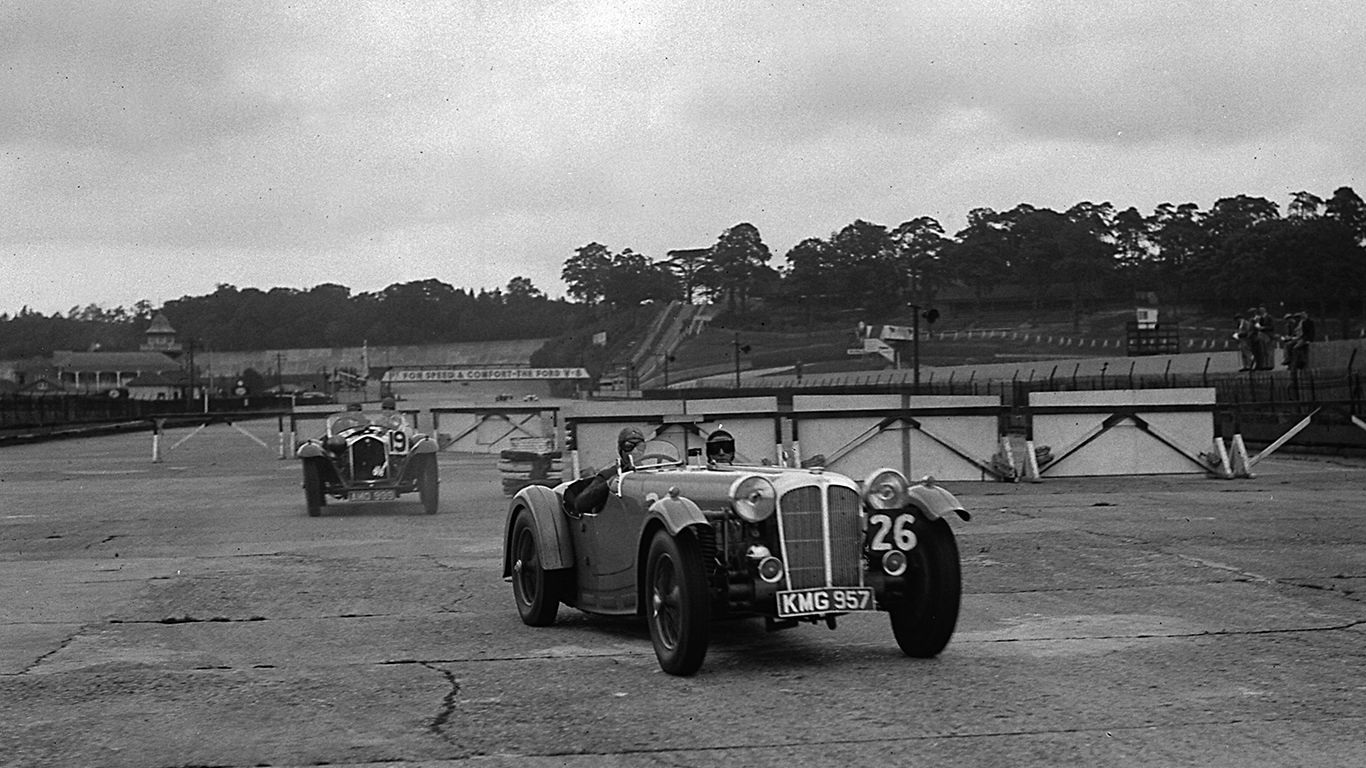
After the War, he was sales director at Specialloid Pistons still, and they said you can't have two businesses at the same time, so he gave up Atalanta Cars and stuck with Specialloid. Specialloid then went bust, believe it or not, and so he should have stayed with Atalanta. Sadly Atalanta only made very few cars, about 30, but it was a great car. So everything to do with my father was classic engineering.
So consequently when I was a kid, he kept in touch with all the motor manufacturers and the engineers, and that is how I met W.O. Bentley. We used to go for tea at his home in Shamley Green every summer. I went to his funeral and I had, until last year, the Order of Service, which I kept in my copy of The W.O. Bentley Story, for all those years, and last year I gave it to Sir Michael Kadoorie for his museum in his own private collection, because I thought it was a wonderful place for it to reside. So that's how I met and knew W.O..
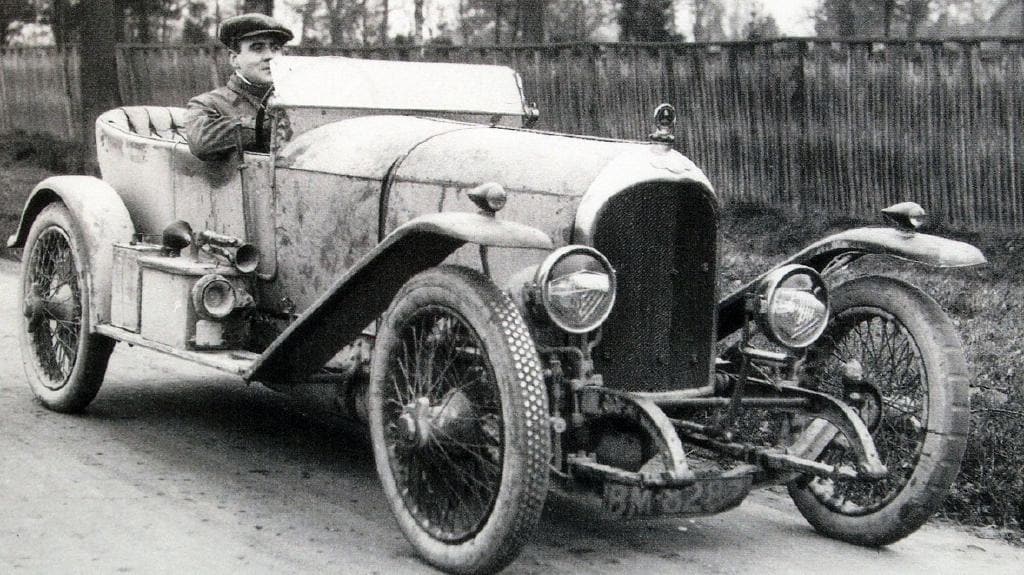
With my father, we went to Goodwood, to the first meeting after the War, and I remember it so well. An HRG turned over in front of us and we saw the guy leap into the air and he disappeared under the four seater in the back, and to everyone's astonishment and delight, he pulled the car up onto its wheels and he climbed out. I always wanted to be a racing driver after that, for some reason.
We went to the Silverstone Grand Prix when the V16 BRM started on pole position and didn't do a lap. So everything I did was around motor sport and motor engineering, and, of course, I was an apprentice engineer.
I was very fortunate because I inherited a nice lump sum of money when I was 21, and that then enabled me to buy my car which I've still got, which is the Lancia Astura, and that is another story in itself.
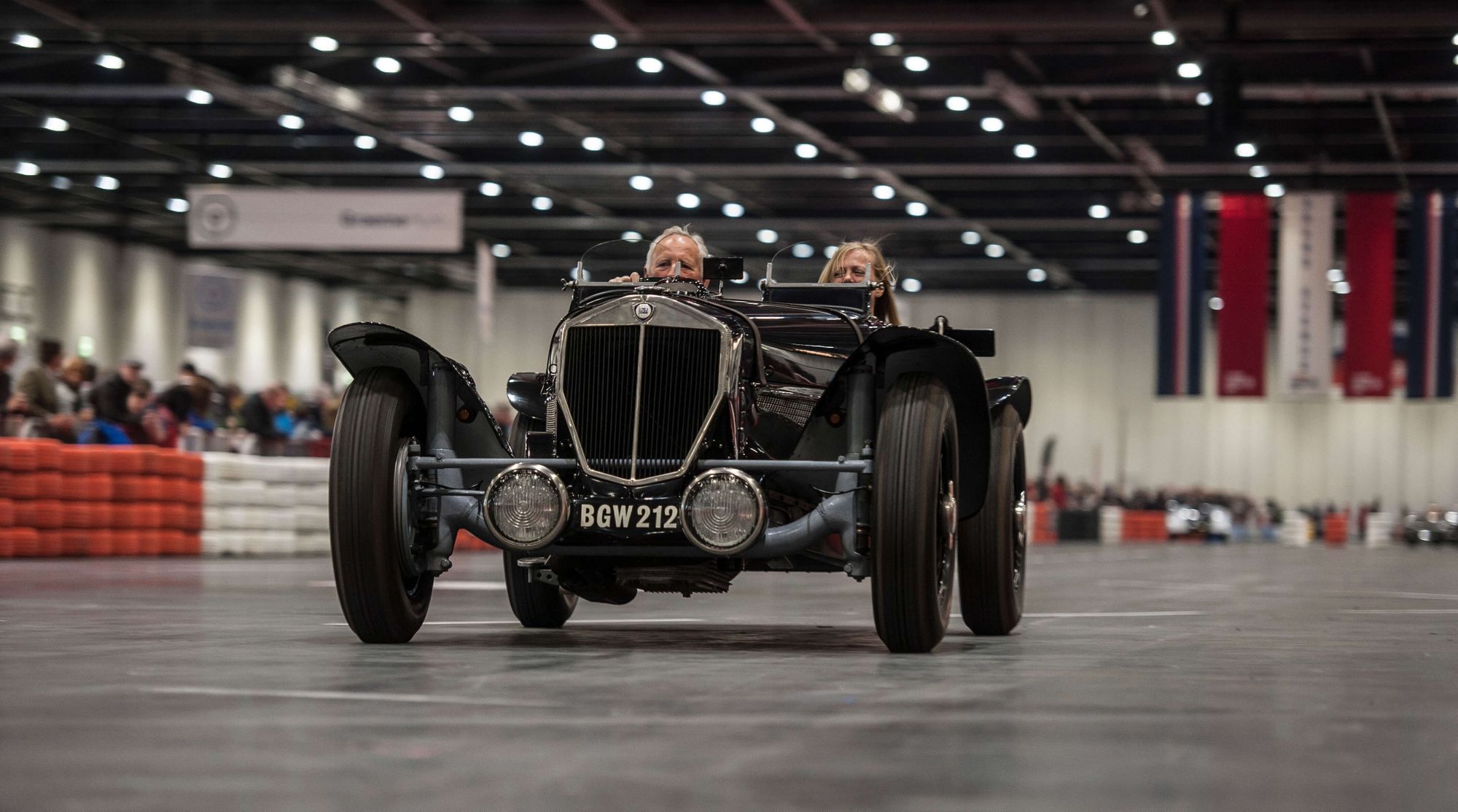


Michael's 1934 Lancia Astura 'Steady Special'. Source: 96 Club.
I'm a bit concerned I'm taking a long time to answer a perfectly simple question, but as a result of my enthusiasm for engineering, I met Maurice Smith who was the editor of Autocar. Maurice was one of the Pathfinder pilots, he got the Distinguished Flying Cross (DFC) for bombing Germany and he was a great friend of mine because I was a competitive squash player. I played in the amateur squash championship every year and Maurice was another keen squash player. He used to go to Le Mans every year with the Autocar and I tagged along with him, and as a result I met Steady Barker.
Steady Barker was the President of the VSCC and a very well known motoring journalist who actually was the road test editor of Autocar. As a result of meeting him, I became a very close friend and I would spend my weekends with him helping him restore his cars. His cars were probably the most exciting collection you can imagine because he was a huge enthusiast and ex-RAF engineer who had worked on all the Spitfires throughout the War.

Steady had a great talent for engineering and one of the most remarkable things that I did with him was we went and collected a 1914 Grand Prix Napier from Odiham in Sussex, in bits.
It had been taken to bits by the owner in 1921. We collected the Napier and five years later, we actually drove the car, having completely rebuilt it, and that's a very famous car.

Going on from there, Steady had in the back of the workshop a Lancia Astura which he had bought as a saloon just after the War because he wanted to go racing. As a result, he took the four seater body off and made it into a two seater racing car, with a DB2/4 Aston body on it, and he then raced it. I bought it from him with my ill gotten inheritance, and I still have the car, which is astonishing. It's a wonderful car.
I've seen some photos of it and it's an absolutely beautiful thing. Am I right in saying that you did actually end up selling it to Eric Clapton for a brief period in the ‘70s?
Well, this is where the story is a bit of a strange one, because having bought the Steady Special, which I call it now, I decided to go to the South of France for a holiday. I needed a spare wheel, because I hadn't got one, and Steady said to me, “don't worry old boy, I know where there's a whole car.” We went round the corner in Weybridge to Oatlands Park, and there in the bushes beside an unimpressive house was a dilapidated garage, and sticking out through the bonnet of the old car, was a tree. I have photographs of the car. I bought the car, there and then, or Steady bought it because he lent me the 15 quid. So we bought the car for 15 quid, towed it home, and didn't use the wheel because it filled up the whole of the boot. So I went off to the South of France.



The Lancia Astura found in a dilapidated garage on a private estate in Oaklands village, Weybridge, which Michael purchased for £15. Source: 96 Club
Two months later Steady said to me, “I've got great news for you. I was at the Turin Motor Show and I saw Battista Pininfarina, and I showed him the picture of your car, and he said to me, get Michael to bring the car to me and I'll rebuild it for you”.
Right, long story, short story. A year later, we drove to Turin in the car. It had no roof on it and was a beautiful open four seater that he had designed when he started on his own, against his father. Anyhow, I took the car down there and a year later I got a phone call from, or a telegram in fact, from the works manager saying, “Come down and collect the car. It's finished.” No cost.




The incredible journey in a Gangloff-bodied Bugatti Type 57 to meet with Battista Pininfarina in Italy, following the completion of Michael's Lancia Astura. Source: 96 Club
So, I got hold of one of my best friends at the time, who happened to have a Type 57 Gangloff bodied Bugatti, and we drove down to Italy in the Bugatti. I've got a photograph of it with the speedo running at 100 miles an hour.
We had to camp on the side of the road because we had no money. We arrived at Pininfarina, in front of the workshop. He comes out and looks at the Bugatti, and he said, “Michael, you are a rotten. You have brought the most beautiful car to collect your beautiful car.” It was just astonishing because it was a freebie. Well, who could possibly ever have expected to get a freebie?



Battista Pininfarina at his workshops in Italy when Michael arrived to collect the freshly restored Lancia Astura. Source: 96 Club
Anyhow, the long and the short of it was I then had started my insurance broking business, John Scott and Partners, and I used it as the marketing tool for John Scott and Partners. Because of Steady's connection with the VSCC, I became the official broker for the Vintage Sports Car Club and as a result, I got to know all the presidents. That is really how and why I got involved because I then went racing with the Steady Special, but I had to sell the Pininfarina car, because I got divorced, and I sold it to Eric Clapton. So that's the end of that story.
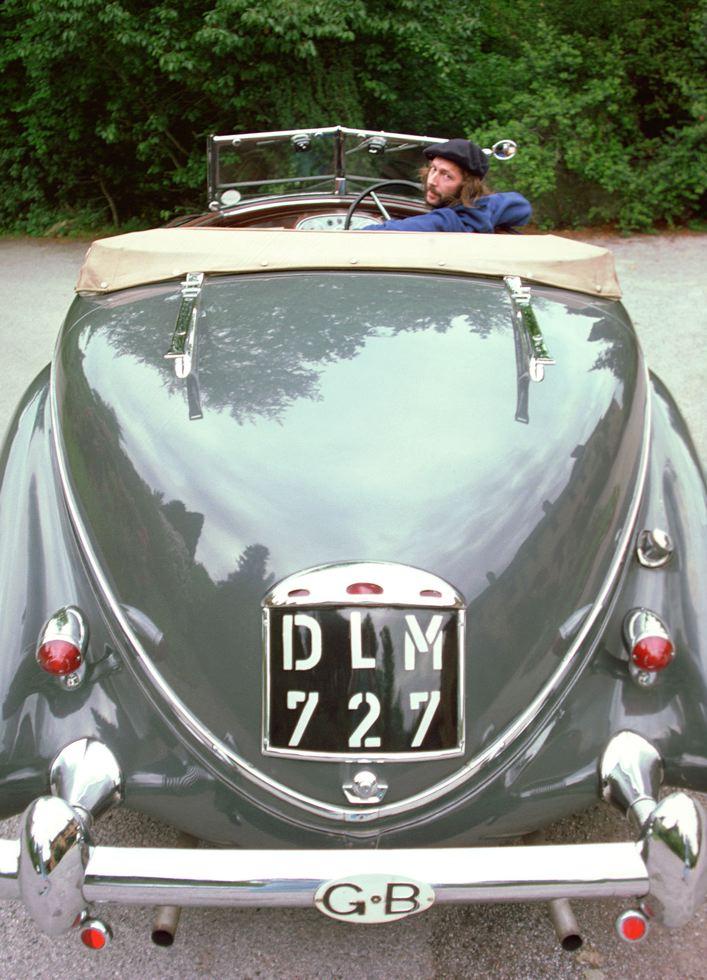

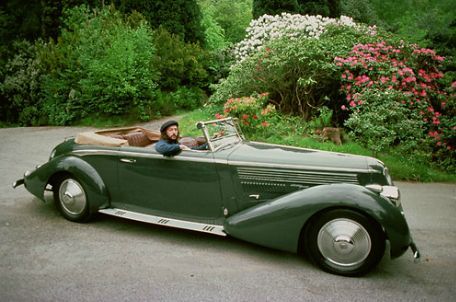
So I did have two cars, two Lancias. So it gets a bit confusing, but my life is confusing.
You're very well known as the founder of the prestigious 96 Club. How did that all begin and why is it called the 96 Club?
Right, this is a simpler answer. Steady Barker was a member of the Guild of Motoring Writers. The Guild of Motoring Writers have had track days for 50 years, 60 years. I went with him to one of their days, and, I remember it well, we went up in a road test Peugeot 504. Anyhow, I spent some time out on the track with him and I thought he's completely bonkers, we're going to crash, because I had never been on a race track before. Consequently that's when my passion for actual racing began because he was a brilliant driver. As a result, I got the bug in a big way and I then went racing.
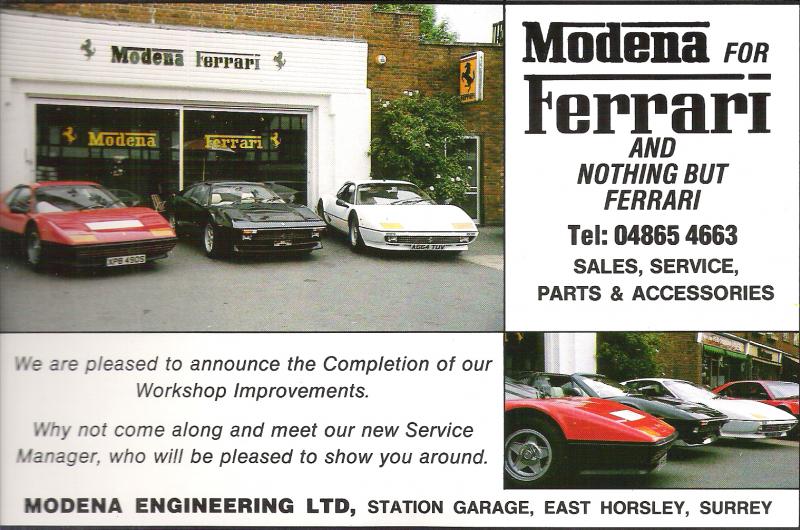

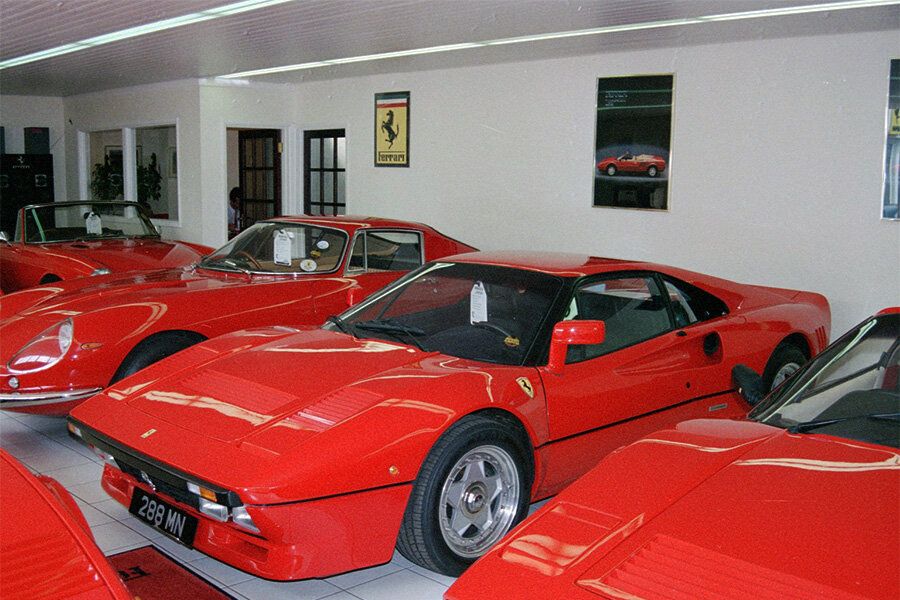
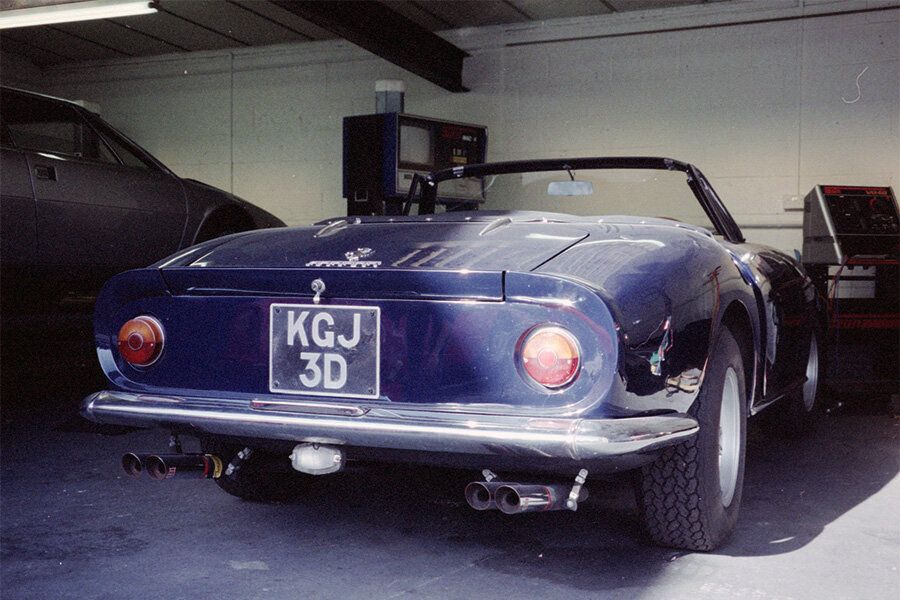

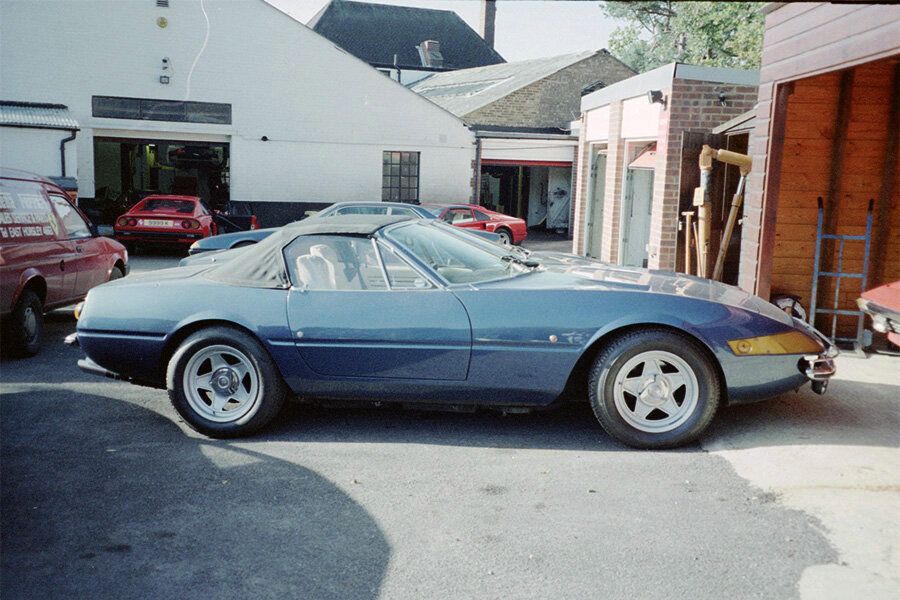
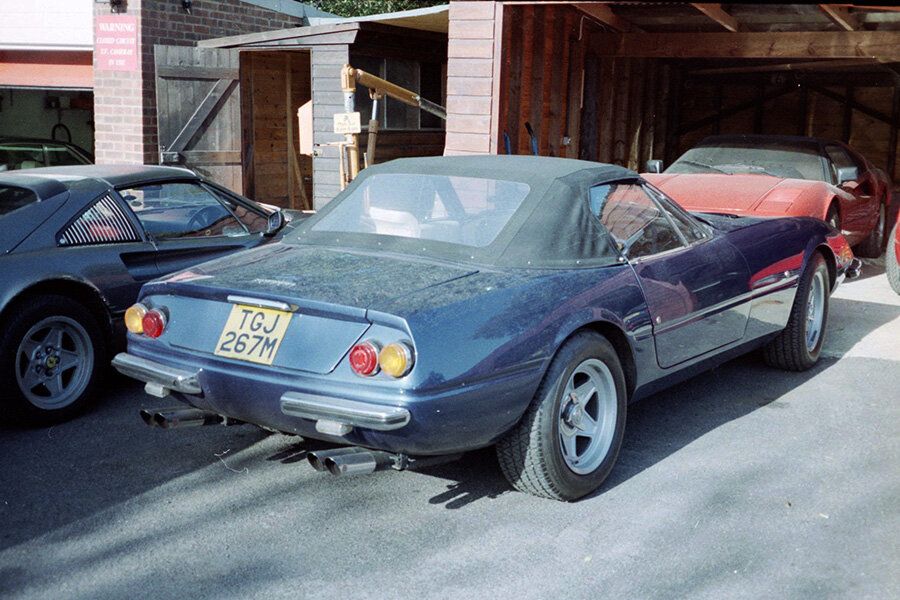
Modena Engineering showrooms at Station Garage, East Horsley, Surrey, in 1989. It was an official Ferrari main dealer and in late 1990 the company was acquired by Mohamed Al-Fayed’s Harrods Group. Source: Supercar Nostalgia - www.SupercarNostalgia.com
However, I had a problem because at the same time I started Modena Engineering, the Ferrari Garage. I happened to sell a friend of mine, Ray Bellm, who is quite a well known racing driver because he raced the Gulf Porsches and also the Gulf McLaren, and I had sold him two Ferraris. He promptly lost his license for driving his wife to hospital in one of the Ferraris, and he got done for speeding at 96 miles an hour. So that's where the ‘96’ bit came from.

Three weeks later, we were playing golf and he said, Scottie, we've got to start a way of renting race tracks so that we can use our cars when we've lost our license. So that's why we started the club. We started it because we wanted somewhere to practice and also to be able to use our cars when we had no license. So that's the answer to that.
Fantastic. You've introduced a huge number of people over the years to racing and driving on track. I believe Eric Clapton, who you mentioned, is one person. Also Nick Mason, David Gilmour and even Rowan Atkinson, who my father used to race against in the AMOC days with his Aston Martin. Have you got any stories about the 96 Club track days and what would be your advice to someone thinking about doing one for the first time?
It's a difficult question to answer but I'll try and answer the first bit. I suppose the best story we have is actually a Rowan story. We were at Mallory Park and he was out there in a Renault Club Car. The great thing about the club is that we were used to the Nick Masons and the Chris Reas and Mark Knopfler, so nobody really took any notice of them, but obviously we were slightly in awe of them all.
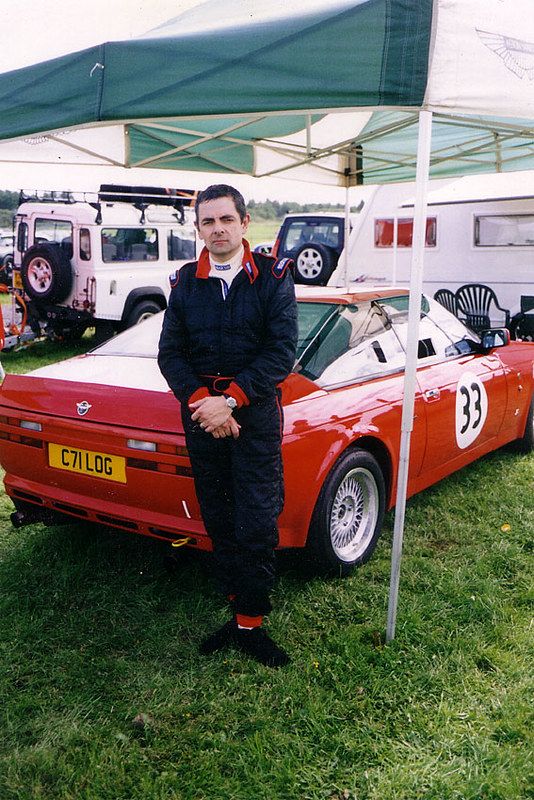
But Rowan was out in this Renault going very quickly. I don't know whether you've been to Mallory but there's a big lake in the middle of the track. Anyhow Rowan lost it right up at the far end, on the other side of the lake, and we saw him, horrified, going backwards into the lake. He stopped a foot away from the bank. When he came back into the pits, he got out and Mr Bean told us the story. It was the funniest display or description of a car accident I've ever heard, and he did it in the typical Mr Bean fashion, which you either love him or hate him, and I love him.
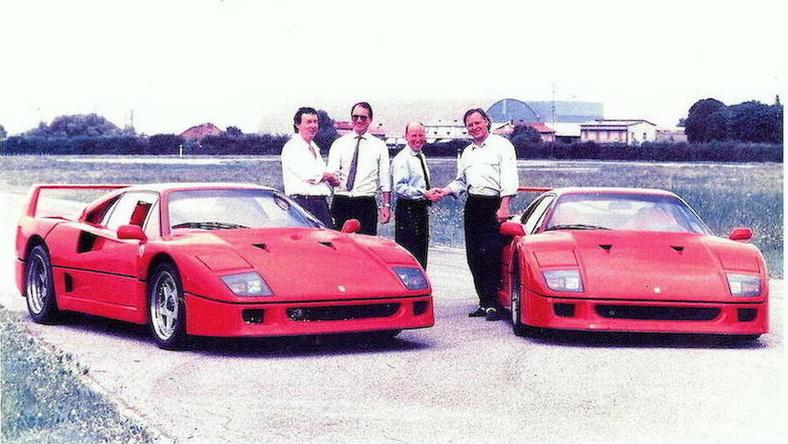
Other stories, Nick Mason and Dave Gilmour arrived back from Italy having driven their F40s to Silverstone and they were the first ones to come to the country. I was standing next to him and he said, “Go on. Off you go.” And so I get in his F40 and I do 10 laps of Silverstone in this bloody car. I don't know whether you've driven an F40 but they are the most wonderful car. They're the most exciting super car there will ever be, in my opinion.
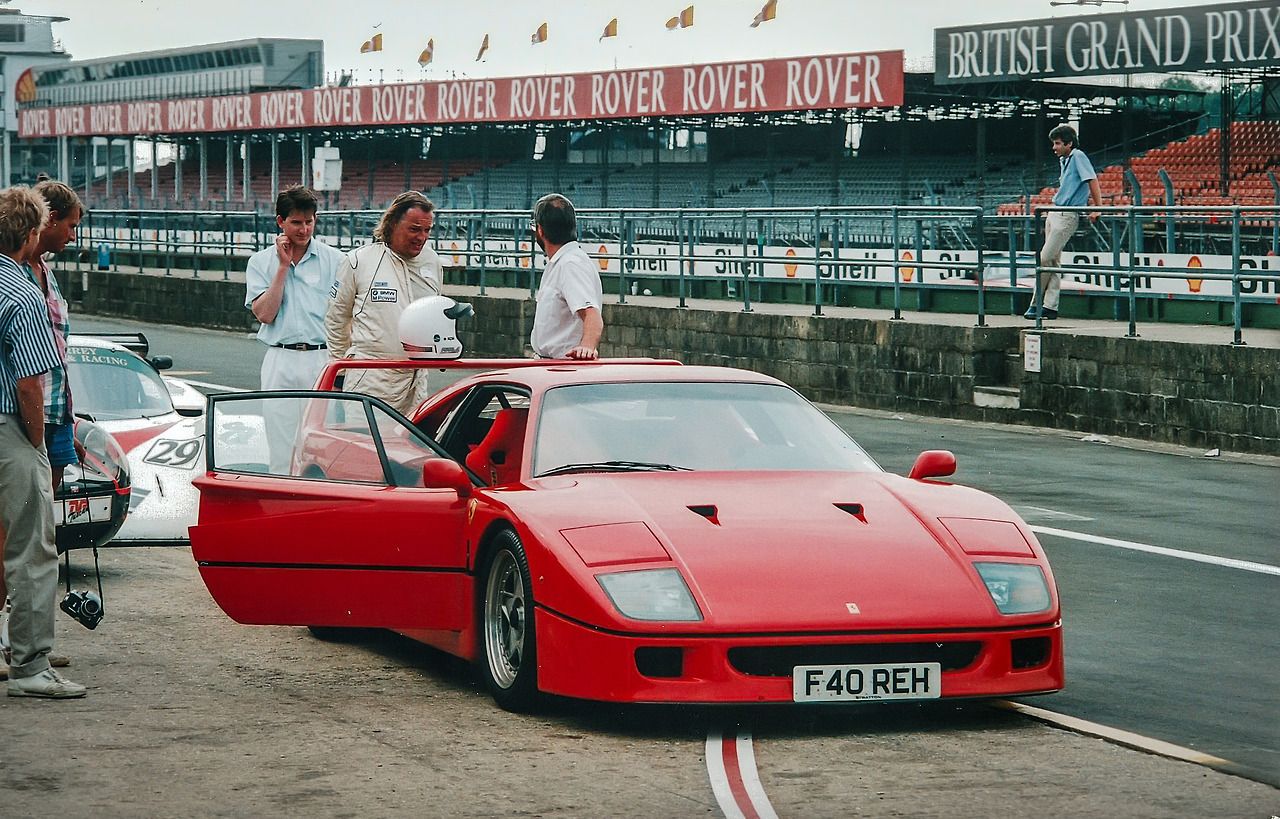
Sadly not, it's on my bucket list to do one day.
Well, you should do because it's the most wonderful thing. I organised a race against the Orient Express and we drove 12 supercars through the night to the Cipriani in Venice, and I was lucky enough to go in an F40. We were stopped for speeding at 3 or 4 o'clock in the morning in Austria, and we were doing sort of 130 or 140mph, coming down the mountains, and we saw this police vehicle flashing light. They pulled us in and the guns were out and they couldn't believe what they saw. They said, “I think you were speeding. We will have to fine you.” And they fined us 6 Austrian Shillings [less than £1] and sent us on our way. To change gear in an F40 it sort of pops at you. Very exciting, and a raw, really raw bit of kit.
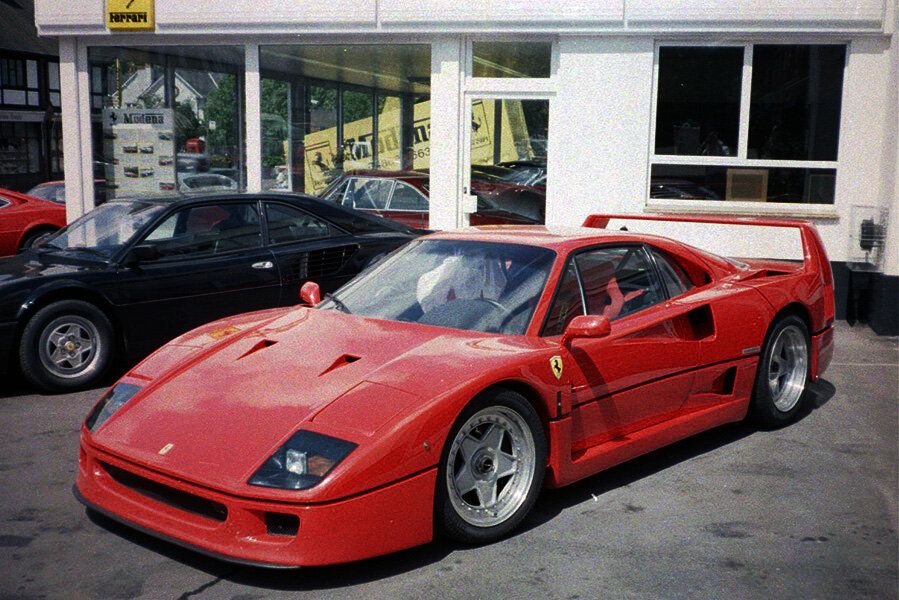

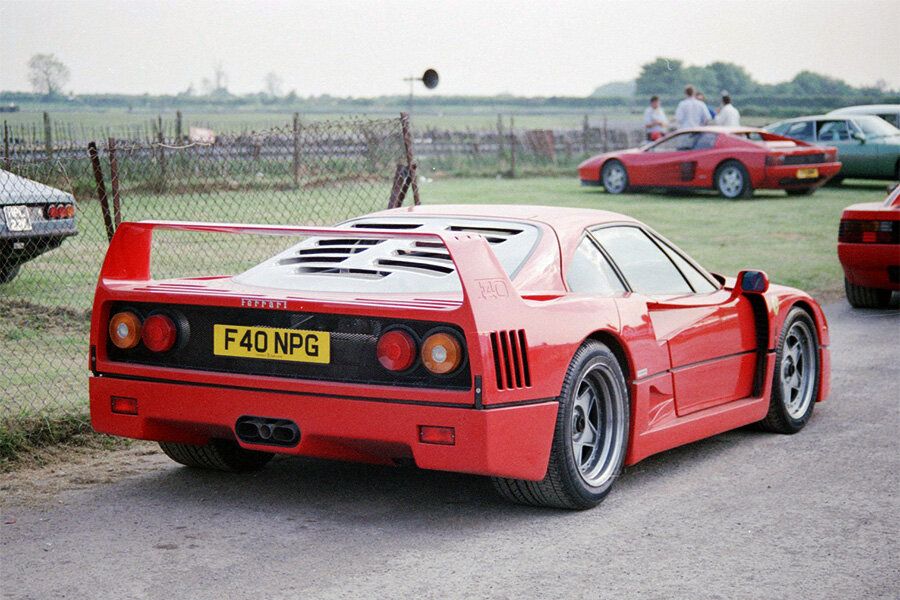
Nick Mason's Ferrari F40 at Modena Engineering and at various events. Source: Supercar Nostalgia - www.SupercarNostalgia.com
Iconic car, absolutely.
I don't want to tell now but there were other stories. Nick Mason has been a friend of mine because his father, Bill Mason, made all the Shell Films. He was a friend of Steady's, so Steady obviously introduced me to Bill. I had just started my insurance broking business and so I insured Nick when he was an architectural student, and he had no money but he had this lovely Aston Martin, which we insured for fire and theft. That was before Nick was what he became and what he is, one of the biggest collectors and one of the nicest guys you'll ever meet.
What would your advice be to someone thinking about doing a track day for the first time?
Well, it's one of those things that I was a very bad driver and I was lucky enough to race a lot of interesting cars and it's not nearly as scary as you imagine, as long as you have an instructor and listen to the instructor. When we started the 96 Club, we had a bit of a reputation for writing cars off. So very soon after we had had two or three accidents, although we were very lucky in the 50 years that we did car track days we, touch wood, had no nasties, but I instigated a new rule, you had to have instruction whoever you were, before you go out on your own. We had the rule that whatever circuit you had been to, if you hadn't had instruction and you were a novice, you must have instruction, because it is very easy to make a fool of yourself. You can go out for half an hour with an instructor, and then go out on your own, and suddenly you find that you've become Stirling Moss and you lose it and it ends in tears.
Nowadays I think it's more important than ever, the track day clubs, because it's the only time you can actually get to enjoy and drive a fast car fast. You can't do it anywhere else. I think it's something that we should be encouraging everybody because it's the only fun you can have with a car. I don't know whether you agree with me?
I definitely agree and certainly I started out historic racing myself through doing some track days. It was a great way of getting the confidence to then do my first race, so I completely agree. Particularly these days, as it's pretty difficult to do 130 miles per hour on public roads without getting into some trouble, so I completely agree, I think track days are a fantastic tool.

With the 96 Club, you have two of my all time favourite racing drivers as your Patrons in the form of Sir Stirling Moss and Derek Bell. We’re obviously incredibly sad about Stirling passing away a few weeks ago or a month ago now. Can you tell us a bit about Sir Stirling and how he became a patron of the 96 Club and maybe give us a few of your thoughts as to why he was such an iconic and loved racing driver, and indeed a true gentleman?
Well, you can imagine, I went to Haileybury school, Stirling went to Haileybury. He was 10 or 12 years ahead of me. His name was carved on a desk I sat at, and I was a fan of his from day one. Luckily, through Steady, I met him at a race day and I got on very well with him. The first time I actually got to know him very well was when Philip Mann had the 1914 Grand Prix Mercedes, the winning car. I had been taught how to start big old cars on the handle by Steady, and the principle is you put it on compression and then you look over your shoulder and you confuse the car into thinking that you're not going to do anything to it, and then you swing it and it will fire up.


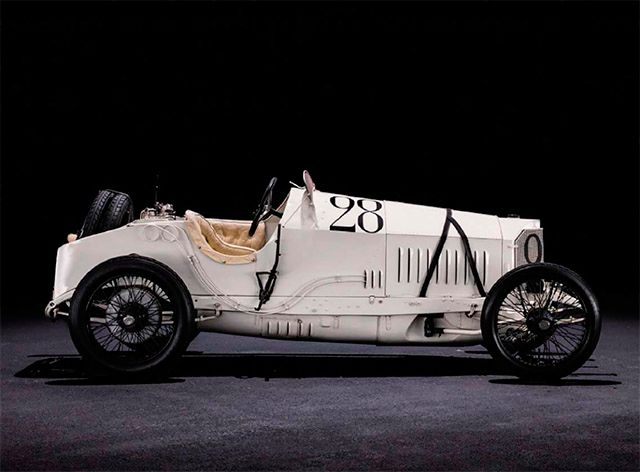
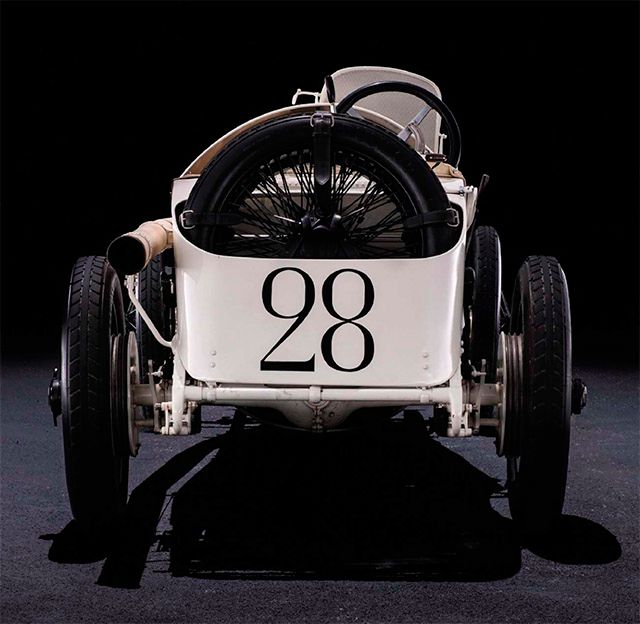
1914 Mercedes Grand Prix Car. Source: Eric Richardson at Drive
Before I taught Philip Mann how to start the car, he always used to take two people with him wherever he went, so that you could push. Mercedes Benz wanted us to display the car in London, so I was asked if I would do it, because I was the only one who could start it, and I had to drive Sir Stirling, or I didn't drive Stirling, I put Stirling in the car and I was driven by him. We were in Hyde Park and we went up the wrong carriageway and there's no right turn and Stirling turned right. Well, you can imagine, the policeman said, who do you think you are? Well it was Stirling Moss.
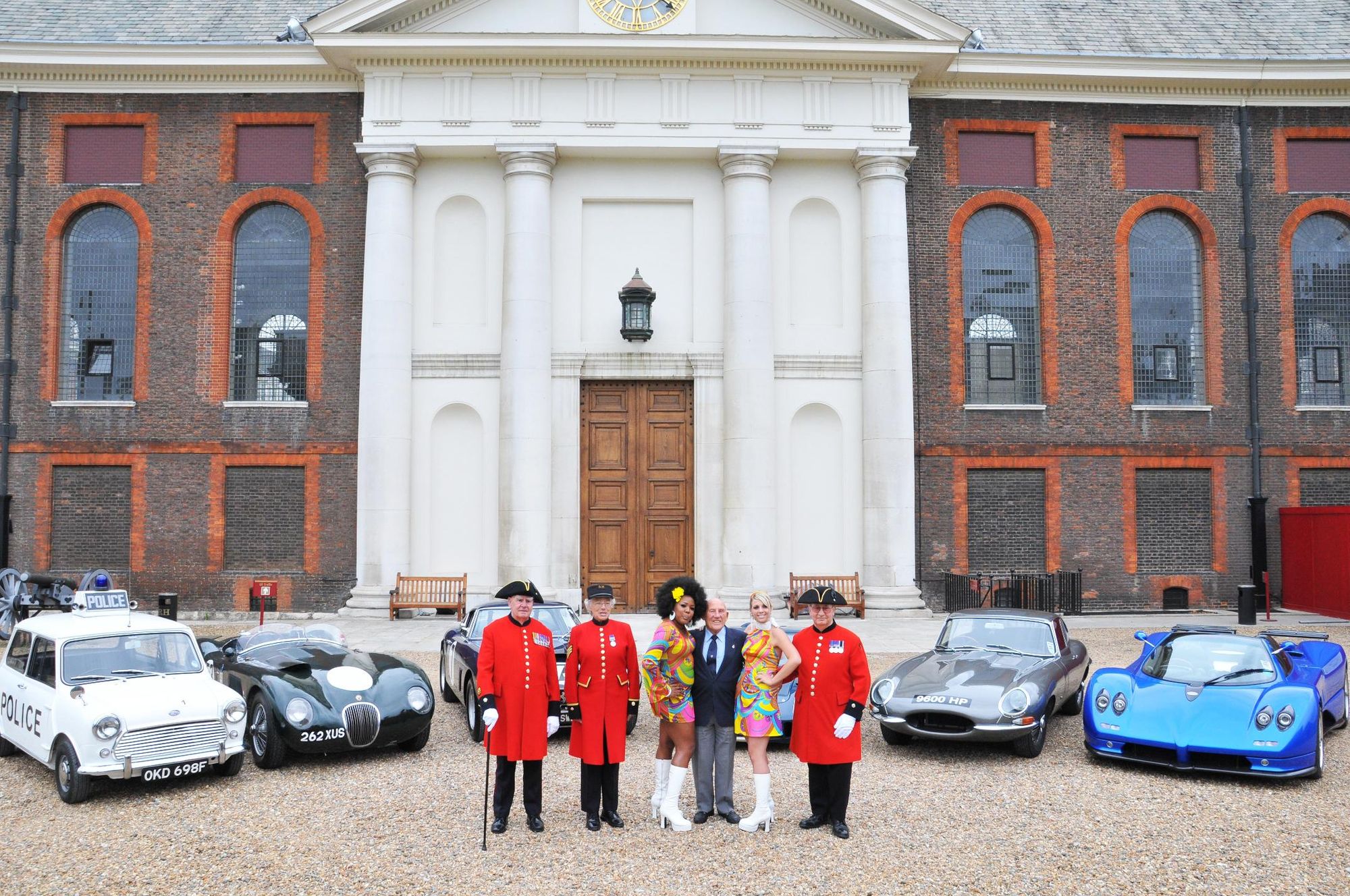
So I knew Stirling pretty well and became a great friend. So when I started the 96 Club, I asked him if he would be one of the Patrons and he said yes. He turned out for me once or twice a year for the whole time we had the club. When he died I wrote to all of my members and I said can you please send in some of your memories of Sir Stirling, and I've had over 50 people write in with little stories about what a gent he was, funny little stories about staying in a hotel during the last Targa Florio, when the member stayed in a hotel with him. Every story I've got, or memory of Stirling, is what a wonderful guy he was and what a talented person and how charming. I'm compiling a little tribute to Stirling, and I'm going to publish all these little articles because they're just divine, divine, and he was just a lovely person.
I completely agree, I've been fortunate enough to meet him a couple of times and I couldn't agree more. Indeed he actually asked my mother on a date back in the day, which I'll have to forgive him for, but I think my father wasn't too happy about it, given that they were going out at the time. But there you go. He must have met Susie and the rest is history.
He was an enthusiast.
In fact, I was actually in his last historic race he did at Le Mans and I happened to be there when he got out of the Porsche, I think it was a 718 RS which he was racing. It was his car. He said, “It's the first time ever in my career that I felt scared in a race car”, and he just went that's it, he's retiring, and he never raced after that. But yes, an amazing, amazing man and what an incredible driver. Certainly one of my absolute heroes.

Coming back to the 96 Club, last year, 2019, marked the 40th Anniversary of the Club. What is in store for the future of the fantastic club and how is the Club adapting to the current coronavirus lockdown?
It's a bit of an unfair question there because it's all work in progress. One of the things that I'm very lucky in that my son has a film catering business and he's mothballed the whole operation because of the virus, basically because filmmaking has stopped. He had 10 days ago, a 44 page dossier, because obviously when you're doing the catering for a film, you have got all the stars, you look after all the team and you've got to keep them safe. The rules he's making and the structure he's making is going to be priceless from our point of view, because we will be able to put on events with the knowledge that if it's good enough for the film industry, it will be okay for our club members.
We're doing these Virtual Rendezvous which you're kindly coming to on Sunday, but we hope that by September we will be in a position to have a proper car show along the lines of the 96 Club Rendezvous. We're planning to do it at Wimbledon because we've got a lot of space there. Wimbledon is a Capability Brown estate and we've got enough room for 100 cars, 200 cars. So we're planning to do our first event there.
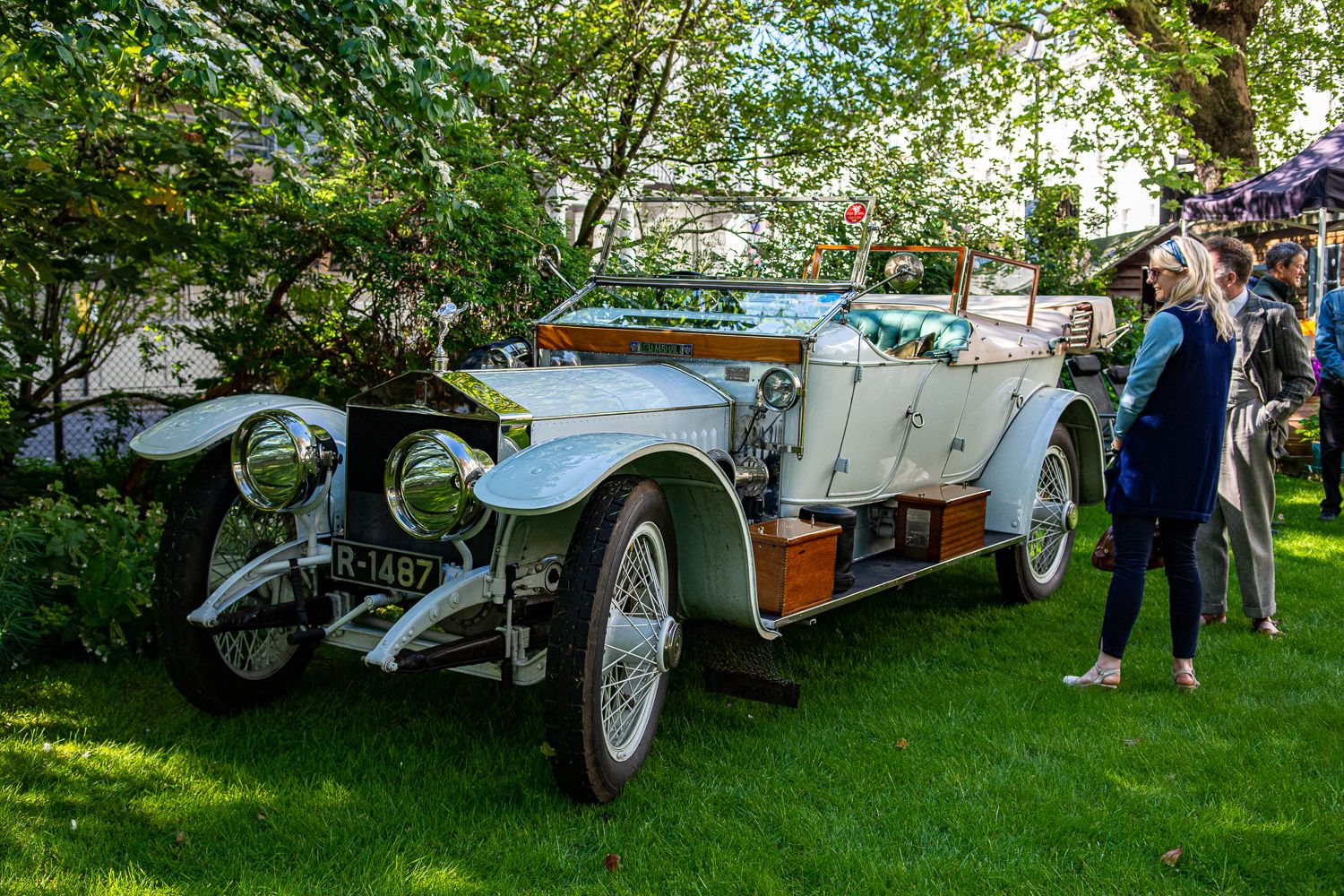
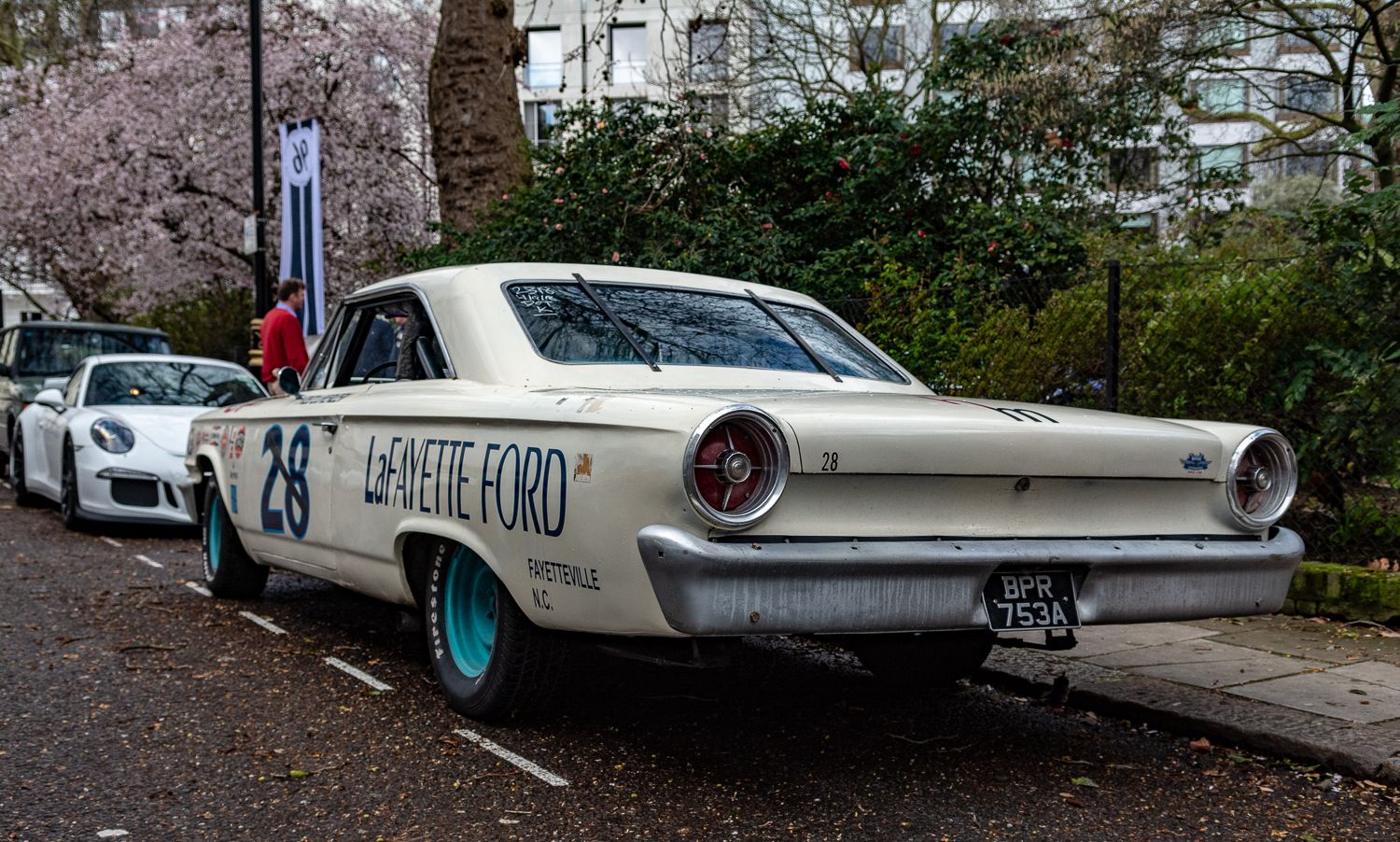

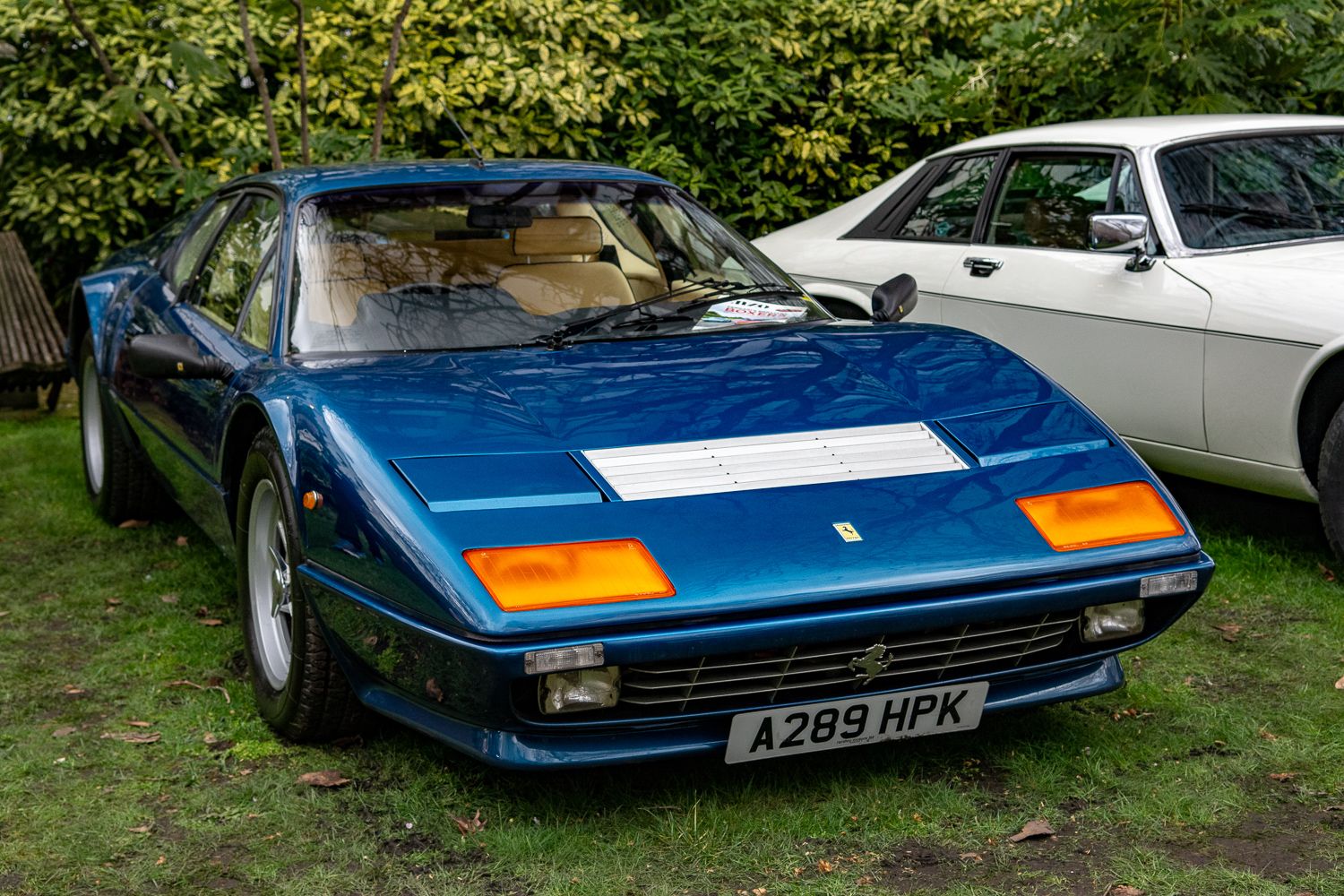
Pre-coronavirus 96 Club Rendezvous at Chesham Place. Source: 96 Club / Credit: Graham Glen Photography
I suppose what we're thinking is we've got to wait and see what the rules are, because people want to use their cars and, as you know, London is a nightmare for car ownership because they just don't want us there, do they. Every time you open the paper there's another rule and restriction. So consequently what we're going to have to do is, we're going to have to dilute our events. We've got over 150 members and we have this place in Chesham Gardens which actually will only hold in future 25 cars. So we're going to have to have say three Rendezvous a month in the garden to cater for the members, but we'll also put on bigger events, but those we're going to do in Wimbledon in September.
So apart from adapting, as I say it's too early isn't it? I don't know whether you've got thoughts about what you think the future is going to be but we're nervous about it. There's this new zone that you can't drive into in London which is 18 hours a day and seven days a week. Well, it's ridiculous but that's what's happening isn't it. What can we do with our cars?

From a regulation perspective I'm not sure, but I think from a passion perspective, I know that all the people I speak to who have classic cars during lockdown, they're all desperate to get back out to events and to get back on track. So I think there's a lot of pent up desire to get behind the wheel again as soon as they can and to attend these events. So I'm not worried about the passion being there, the regulations sadly are out of our hands, so we'll see.
Well, we do have a track day on the 10th June at Brands Hatch and we're fully subscribed, so you're actually right. People are very keen to get back on the track.
Absolutely. I'm conscious we're taking up a lot of your time, so to end with we have a few quick fire questions. So first question is, restored or patina?
Well, it's patina really. We've got one of the restorers with the Guild members who at a recent, I'm not going to mention any days, recent concours, won best original body, and he painted it two weeks before. So there are some very, very clever painters who can make cars look old. I love cars which haven't been restored. I've got one of my friends who has got a 250 Lusso that's got the same paintwork and it's never been painted and it's delightful. But it's not a concours winning car, right. So my view is I wish my car's paintwork was original but it's not. History and time doesn't really encourage you to leave cars as they are, but certainly, in my opinion, patina is wonderful.

Yes, I agree. Most unusual car ever to attend a 96 Club meeting?
Well, Agnelli's 212 Ferrari which was amazing. We've had such a selection of cars. We've had an 8C Alfa, which was Nuvolari's car. It's too difficult because I love cars and therefore, is it the most rare car, is it the most famous car, or is it just the nicest car to drive? To be honest, there is no finer car than an 8C Alfa, because it does everything. The modern version of the 8C, in my opinion, is the 250 Short Wheelbase Ferrari.
I have been very lucky because I've driven so many amazing cars. For two years I had Nick Mason's 250 GTO in my garage because he was in the South of France, so I looked after the car. I suppose it wasn't very expensive in those days, it was only £50,000 instead of £72 million. I actually left it on the side of the road because I ran out of petrol on the way to work, and I collected it two hours later. I got married in it. I was driving back from the registry office and went across the Hog's Back and my new wife said, “I never want to go in this damn car again.” I said, “well, I'm sorry about that.” Well, the marriage didn't last. [laughs]
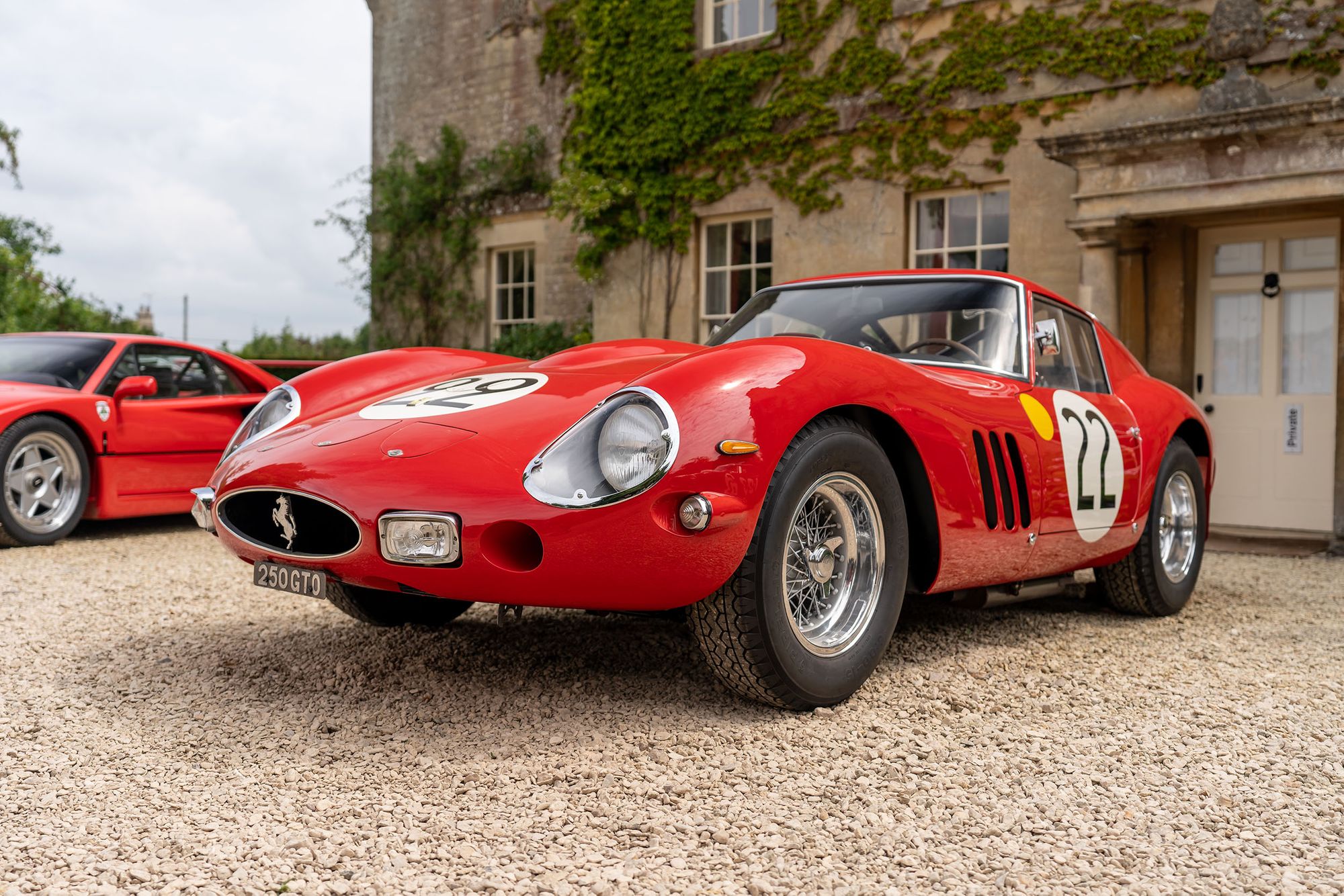
So I suppose the GTO is iconically probably the most sensational valuable car ever. So that's probably my favourite car.
Favourite circuit?
Well, I suppose it can only be Spa. I don't know whether you've driven Spa, but it's the most amazing circuit. It's got everything, in my opinion. You've got to have seriously big..., you've got to have seriously strong resolution to drive that circuit really fast. Eau Rouge is just the most mind blowingly exciting experience you can have. So, Spa is my favourite circuit.
Amazingly, you're the fourth person we've interviewed that said exactly the same thing. So we had Lord Hesketh, he said again, his favourite circuit, Gillian Goldsmith or Fortescue-Thomas, again her favourite circuit, and actually last week we spoke to Rob Hubbard, Head of MPH Bonhams, again, Spa. So everyone seems to love Spa, and I completely agree as well. I think it's not only from a driver perspective, but from a spectator perspective as well. You get to see some fantastic corners and you get to see long sections of the track given the undulations in the circuit, which at a lot of other flatter circuits you can't see, so I agree.
It's still as it was. It's unspoilt. When they put the chicanes into Le Mans, on the Le Mans straight, they destroyed the whole thing. Spa is almost identical to what it was, as it's always been, except the long circuit. I've actually never raced on the long circuit, but the long circuit was a seriously important bit of racing. You couldn't improve on that. Basically where they've cut it down from I think two miles, haven't they? So what it was like originally, God only knows. It's heaven, wonderful.
Yes, I agree. Last question, and this might be a tricky one given your Lancia, British or Italian cars?

There's no contest, is there really. Italian. I've had over 30 Lancias. I've had five Ferraris. I started a business because I bought a Ferrari, a California Spider for £1,900 in Malta. The guy who found it for me, blew the engine up on the way to the docks, and I started a business to rebuild it. So the Modena Engineering story, that is a nightmare but it's also wonderful because it enabled me to enjoy Ferraris. And I've loved them, but my favourite car is a Lancia.
Michael thank you so much for your time. There's some great stories in there and what a fascinating automotive life you've led and, indeed, continue to lead. So thank you for your time and we look forward to speaking to you and your members at the Virtual Rendezvous.
Very good. Thank you very much.

